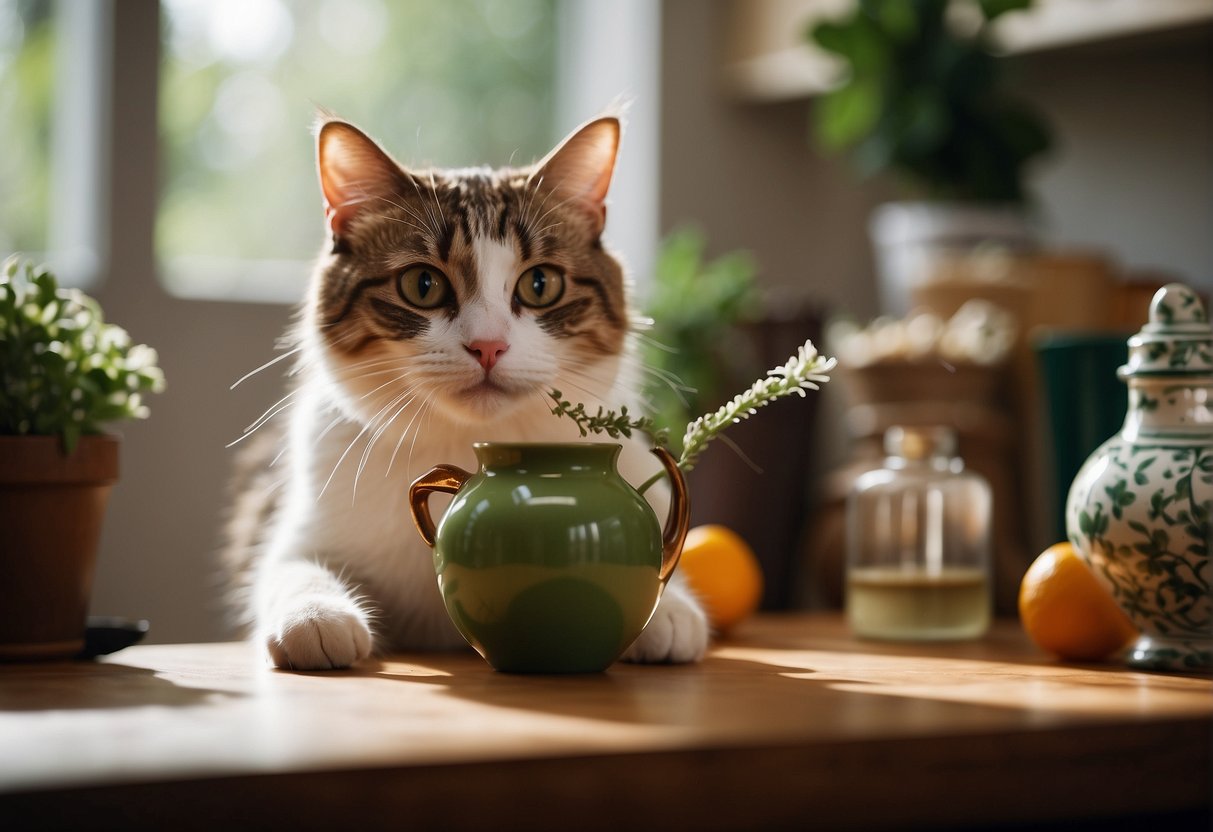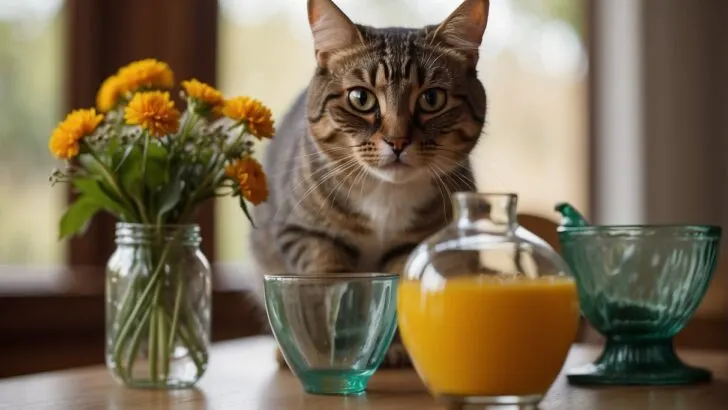Cats knocking things over is a behavior that stems from their natural instincts and environmental exploration. Your curious feline friend might send a pen flying off your desk or a glass tumbling from the counter. In my experience, it’s not uncommon to watch a cat paw at a small object, testing it to see if it moves like prey.
Their sharp reflexes can make any small, movable object an instant toy, leading them to bat it around and, quite often, off the edge of surfaces.

This behavior is also a way for cats to engage their senses and interact with their world. Cats are tactile creatures and use their paws to examine and learn about their environment.
Maybe you’ve noticed how your cat will carefully pat an unfamiliar object before deciding what to do with it? They’re assessing its texture, weight, and potential for play. This is perfectly natural, although it can sometimes result in a bit of a mess.
Reasons Why Cats Knock Things Over

Cats are known for their playful and inquisitive nature, often resulting in them batting at objects and knocking them over. This behavior, while sometimes amusing, is rooted in several innate feline tendencies.
Predatory Instincts and Prey Drive
Your feline friend demonstrates predatory instincts and prey drive when they swipe at inanimate objects, simulating the hunt for prey.
The fast movements of objects trigger their hunting instinct, as they might mirror the actions of scurrying mice or fluttering birds. To keep these instincts sharp, it’s key to provide ample playtime with toys that mimic these prey-like movements.
- Recommended Toys for Predatory Play:
- Laser pointers (but always finish with a physical toy to avoid frustration)
- Moving feather toys or wands
- Motorized mice
Seeking Mental Stimulation
Mental stimulation is crucial to prevent boredom in cats. Without it, they might resort to knocking things over as a form of self-entertainment. Thankfully, there are various ways to keep a cat’s mind active:
- Mental Enrichment Options:
- Puzzle feeders to make them work for their food
- Cat trees for climbing
- Puzzle toys that engage their problem-solving skills
Desire for Attention
Sometimes, your cat might display attention-seeking behavior by pushing items to the floor.
They quickly learn that this act can result in immediate attention from you, whether it’s to scold or to tidy up. To counter this, provide positive reinforcement when they play nicely and schedule regular interactive playtime to satisfy their desire for your attention.
- Tips for Redirecting Attention-Seeking Behavior:
- Ignoring the unwanted behavior and avoiding reinforcing it
- Scheduling daily interactive play sessions
- Using clicker training for reinforcing positive behavior
Practical Solutions for Cat Owners
With the right approach, you can discourage unwanted actions and encourage safer, more acceptable forms of play.
Encouraging Appropriate Play
To satisfy your cat’s instinctual needs, engage in regular interactive playtime with toys that mimic prey, such as wand toys with feathers or small plush mice. This not only diverts their attention from knocking items over but also strengthens the bond between you and your cat.
- Create a daily play routine that ensures ample playtime, which can help curb attention-seeking behavior.
- Invest in puzzle toys that offer mental stimulation while rewarding them with treats when they solve them.
Preventing Unwanted Behaviors
Positive reinforcement is key when teaching cats what behaviors are acceptable.
- Praise and treat your cat for interacting with their toys, not household items.
- For counter-surfing cats, deterring them with safe deterrents (like double-sided tape or aluminum foil) discourages jumping onto places where they shouldn’t be.
Do not punish your cat for an accident, as this can create fear and damage your relationship. Instead, ignore the behavior to avoid reinforcing it.
Enhancing the Living Environment
Cats require an environment that allows them to express their natural behaviors freely.
- Install cat trees and shelves to provide vertical space for climbing and observing.
- Puzzle feeders can turn mealtime into an enriching activity that satisfies their hunting instincts and provides mental stimulation.

My name is James, and welcome to FAQCats!
Along with our team of cat owners, expert pet enthusiasts, and pet professionals, we aim to write engaging helpful, engaging content about cats. At FAQCats we strive to provide content that’s accurate and fun to read. Our team writes about everything related to cats; even the most complex of topics. Through extensive research and caring for our own fur-pals, we’re able to provide something cat owners worldwide will love. Have a look around, and leave us feedback anytime!

